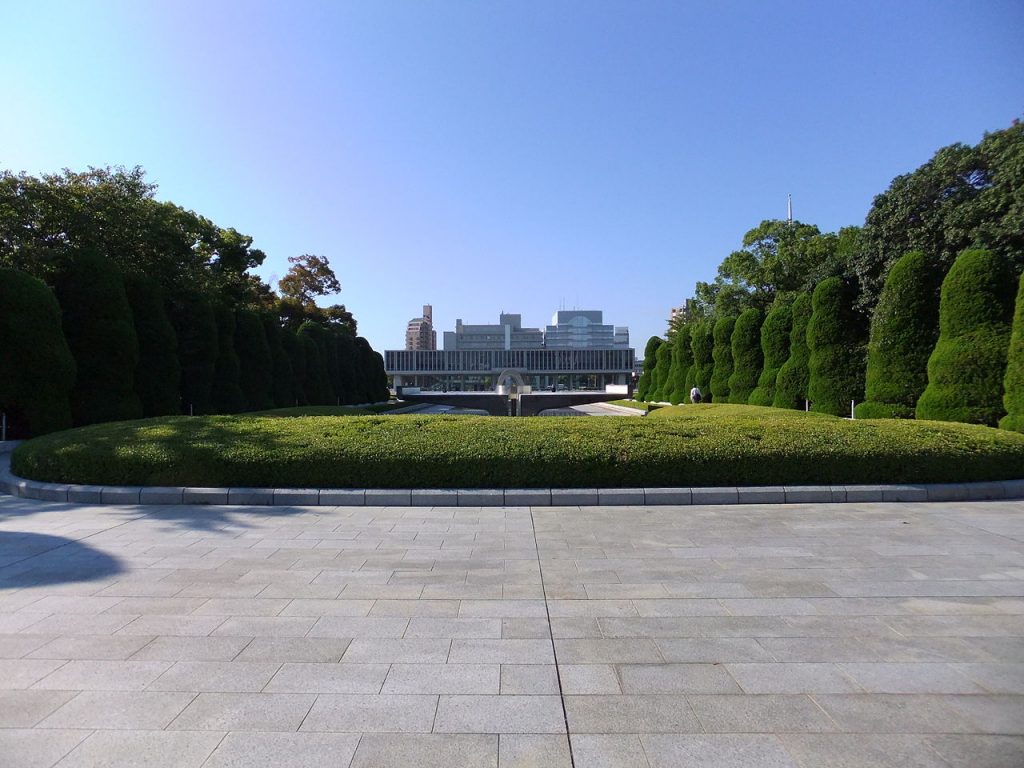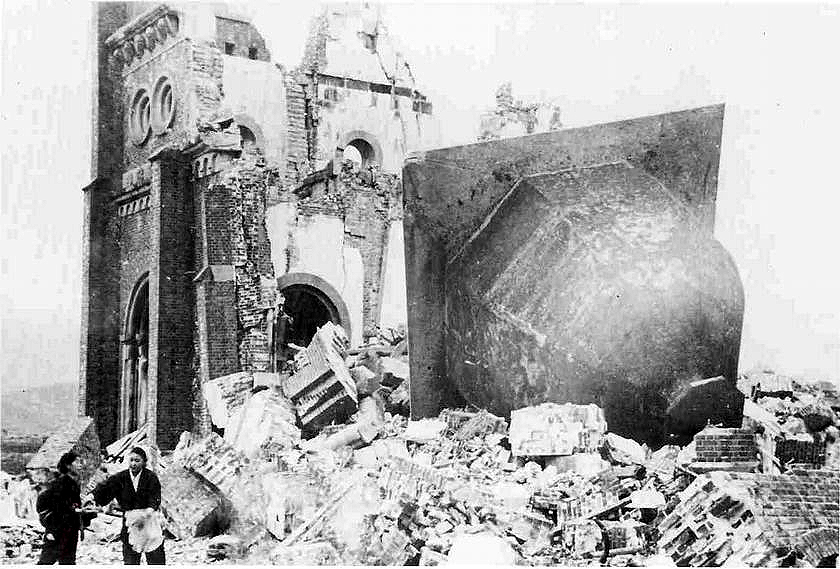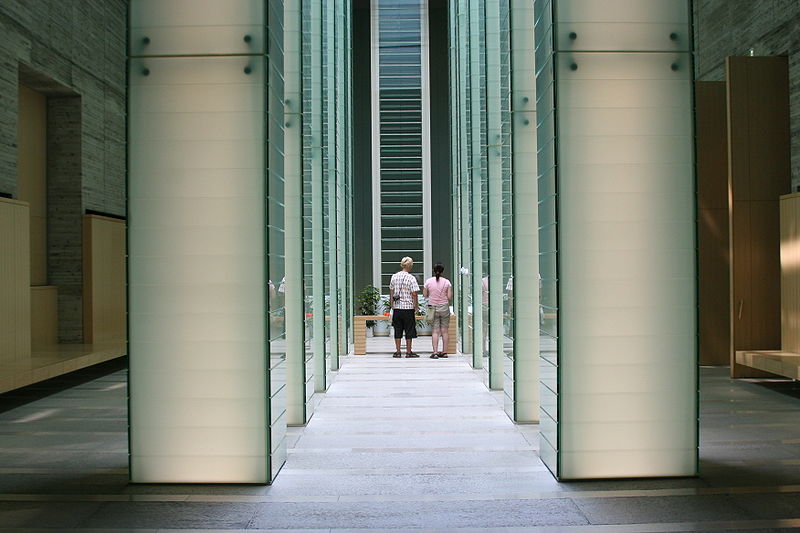Japan

World War II
Japan was one of the Axis powers in World War II. Its attack on Pearl Harbor, HI, on December 7, 1941 brought the US formally into the war. Japan also attacked British, Dutch, and American possessions in the Southwest Pacific around the same time. Previously, Japan had invaded Chinese territory in Manchuria in 1931, as part of its expansionist ambitions, and had attacked China outright in 1937. In addition to troops from China, Britain, and the US, substantial numbers of Australian and New Zealander troops were engaged in fighting Japan in the Pacific Theater. By the time the atomic bombs were ready for use, the other main Axis powers, Germany and Italy, had already capitulated. Japan stood as the only enemy left fighting against the Allies. The use of the atomic bombs was a part of the effort to get Japan to surrender, though their exact role in the surrender has been a matter of historical debate. For more on Japan during the war, see Japanese Atomic Bomb Project, Surveys of Hiroshima and Nagasaki, or the AHF profile for Emperor Hirohito.
Hiroshima
On August 6, 1945, the United States dropped its first atomic bomb on the city of Hiroshima. The bomb known as “Little Boy” exploded with about thirteen kilotons of force. At the time of the bombing, Hiroshima was home to 280,000-290,000 civilians as well as 43,000 soldiers. Between 90,000 and 166,000 people are believed to have died from the bomb in the four-month period following the explosion.
Hiroshima sits upon the Ota River delta where the river diverges into six separate branches that flow into the Seto Inland Sea. Between these branches lie islands, and these islands together make up the city—Hiroshima literally means “Wide Island.” At one of the river’s forks lies a T-shaped bridge called Aioi Bridge: this was Little Boy’s target. Today, this area is home to the Hiroshima Peace Memorial Park. The Park contains many statues and memorials to the victims of the bombing, including the Memorial Cenotaph, the Children’s Peace Monument, and the Hiroshima Peace Memorial Museum. Approximately 69% of the city’s buildings were completely destroyed by the atomic blast. The closest surviving building to the location of the bomb’s detonation, was designated the Genbaku Dome or “Atomic Dome”, a part of the Hiroshima Peace Memorial Park.
Shima Hospital
-1024x631.jpg)
Though the target of the bombing was the Aioi Bridge, a crosswind blew the bomb to the southeast, and it detonated 1,800 feet above Shima Hospital. The hospital is thus the hypocenter—the point on the Earth directly below the center of the explosion. There is a small plaque commemorating those lost in front of the hospital.
Hiroshima Peace Memorial (Atomic Bomb Dome)
The hospital and all nearby buildings were completely destroyed, with a single exception: the Hiroshima Prefectural Industrial Exhibition Hall. The Exhibition Hall’s brick structure survived the blast, as did the metal skeleton of its central dome. Hiroshima’s government has kept the ruin more or less unchanged ever since, intending the bombed-out structure to serve as a symbol of peace and a memorial to those who perished.
Hiroshima Peace Memorial Park
The Hiroshima Peace Memorial Park is located near the Aioi Bridge (which has since been reconstructed) and features a Memorial Cenotaph. A cenotaph is an “empty tomb,” one that contains no physical remains. Instead, the Memorial Cenotaph contains the names of all killed in the bombing. Another nearby cenotaph honors an often-forgotten group of victims: Koreans.
The Hiroshima Peace Memorial Museum
 The Hiroshima Peace Memorial Museum sits at the southern edge of the Memorial Park. Since 1955, the museum has educated millions about the bombing of Hiroshima through its various exhibits, artifacts, and presentations. Among the museum’s holdings are watches stopped at 08:15, collections of survivor’s testimony, dioramas of the city pre- and post-bombing, photographs, and pieces of rubble.
The Hiroshima Peace Memorial Museum sits at the southern edge of the Memorial Park. Since 1955, the museum has educated millions about the bombing of Hiroshima through its various exhibits, artifacts, and presentations. Among the museum’s holdings are watches stopped at 08:15, collections of survivor’s testimony, dioramas of the city pre- and post-bombing, photographs, and pieces of rubble.
Floating Lantern Ceremony
Every year Hiroshima honors the spirits of those killed in the bombing with a Floating Lantern Ceremony. Mirroring the custom carried out to commemorate one’s ancestors on the last day of the Bon Festival, thousands gather on the banks of Hiroshima’s Motoyasu River to light lanterns and release them. The river begins at the Aioi Bridge and flows past the Atomic Bomb Dome. For many, it was the only possible escape from the firestorm that consumed the city, and its waters soon ran thick with blood and ash. Now paper lanterns float across the surface, carrying inscribed prayers for remembrance and peace.
Nagasaki
 Three days after the United States dropped an atomic bomb on Hiroshima, a second atomic bomb was dropped on Nagasaki on August 9. The plutonium device known as “Fat Man” exploded over the city with a force of over 21-kilotons.
Three days after the United States dropped an atomic bomb on Hiroshima, a second atomic bomb was dropped on Nagasaki on August 9. The plutonium device known as “Fat Man” exploded over the city with a force of over 21-kilotons.
On the day of the bombing, an estimated 263,000 were in Nagasaki, including 240,000 Japanese residents, 9,000 Japanese soldiers, and 400 prisoners of war. It is estimated that between 40,000 and 75,000 people died immediately following the atomic explosion, while another 60,000 people suffered severe injuries. Total deaths by the end of 1945 may have reached 80,000.
Nagasaki means long cape, and the city is divided into several long, steep valleys that lie along the bay. While Little Boy’s blast traveled easily across the broad, flat delta of Hiroshima, the hills of Nagasaki confined the more powerful Fat Man. Limiting its scope, however, did not make the bomb any less terrible for the thousands who experienced it.
The bomb missed its mark by about one mile, exploding above the Urakami section of Nagasaki. This off-target shot, however, still destroyed two major military targets: the Mitsubishi Steel and Arms Works and the Mitsubishi-Urakami Ordnance Works. The latter produced the aerial torpedoes used by the Japanese Navy to deadly effect during the attack on Pearl Harbor.
Urakami Cathedral
 Only 500 feet from the hypocenter of the blast stood the original Urakami Cathedral, a center for Nagasaki’s Catholic community. Catholic missionaries first came to Nagasaki in the 16th century, and within several decades hundreds of thousands of people in Southwestern Japan were practicing Christians. Completed in 1925, the Urakami Cathedral was at the time the largest in Asia.
Only 500 feet from the hypocenter of the blast stood the original Urakami Cathedral, a center for Nagasaki’s Catholic community. Catholic missionaries first came to Nagasaki in the 16th century, and within several decades hundreds of thousands of people in Southwestern Japan were practicing Christians. Completed in 1925, the Urakami Cathedral was at the time the largest in Asia.
Urakami Cathedral was full with believers on August 9th, who were attending Mass in anticipation of the upcoming celebration of the Assumption of Mary. At 11:01 a.m., Fat Man exploded. The heat and shock wave nearly completely destroyed the cathedral, and killed all inside. After the rubble and bodies were cleared, all that remained was a small part of the museum’s wall: a brick pillar topped with statues of saints. This artifact of the bombing now stands in Nagasaki just beyond the concentric rings surrounding the hypocenter. Nagasaki’s government decided to rebuild the Urakami Cathedral in 1958, and this reconstruction is a functioning church open to visitors.
Bell of Nagasaki
 Another part of the Urakami Cathedral that survived the bombing was a large bronze church bell. It sat unused for decades until 1977, when it was commemorated, with a new frame, as the Bell of Nagasaki. It is partially a tribute to bombing survivor, radiologist, and Catholic peace activist Takashi Nagai, who recounted his experiences in the book The Bells of Nagasaki. Today’s bell is specifically dedicated to the memory of mobilized students and forced laborers, who had no choice but to join the war, and paid for it with their lives.
Another part of the Urakami Cathedral that survived the bombing was a large bronze church bell. It sat unused for decades until 1977, when it was commemorated, with a new frame, as the Bell of Nagasaki. It is partially a tribute to bombing survivor, radiologist, and Catholic peace activist Takashi Nagai, who recounted his experiences in the book The Bells of Nagasaki. Today’s bell is specifically dedicated to the memory of mobilized students and forced laborers, who had no choice but to join the war, and paid for it with their lives.
Nagasaki National Peace Memorial Hall
The Nagasaki National Peace Memorial Hall lies east of the hypocenter and was constructed for the victims of the atomic bomb in 2002. In the remembrance hall, twelve pillars of light represent peace, while other rooms contain photographs and testimonials of victims. On top of the building is a shallow pool, which contains a dazzling array of fiber optic lights that illuminate the pool at night. There are 70,000 lights—the approximate number of civilians killed at Nagasaki.




